
Twenty-fifteen has been an intense year full of cheerfulness, discovery and adventure – I feel I learned so much! For starters I reconquered Rome, which I re-elected as my base (I keep on saying “for the time being”, but truth is, I’m in love with this city). Since I installed in my bedroom in San Lorenzo – the left-leaning, working-class neighborhood of Rome – I felt a new chapter of my life had started.

I’m back home after five days in Venice for the 56th Biennale di Venezia, reporting the event for ArtsHub and realizing interviews for Art a Part of Cult(ure). I had a great time, meet with extraordinary people and lost myself in the maze of narrow streets. Venice is so beautiful it cannot be. Between the pavilions, the “All the World’s Futures” show and the collateral exhibitions, the Biennale was overwhelming. So much great work around you couldn’t believe! I didn’t nearly get to see everything I wanted to see. Just like everyone, at the end of this tour de force I had my feet completely broken and I laid sick in bed for a couple of days. But even then, the spirit was high and I now I feel incredibly energized, happy and ready to take on the world! While you’ll see my articles about the Biennale coming out in the next few days (my personal selection for ArtsHub, the Indonesian pavilion on the Manifesto and the Australians in Venice are already out) here’s the visual counterpoint.
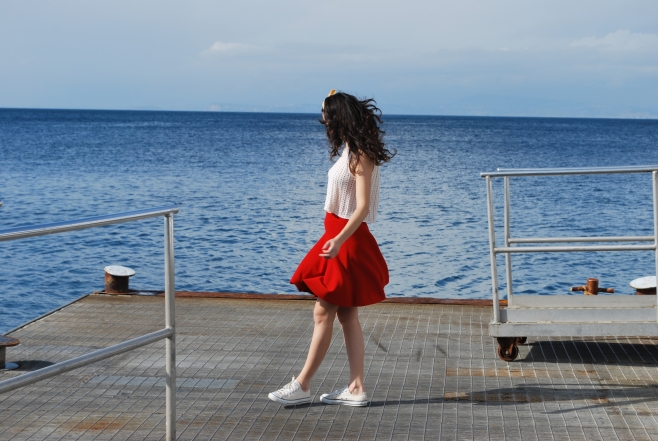
I remember one beautiful evening few years ago in Rome. I was walking with my new friend Francesco, a mime just met at Cinema Trevi. Quite strangely for a mime, he was a chatterbox. I thought that was because he couldn’t talk on stage, so that was his way to vent. Since I just came back from an opening at Gagosian gallery, I was wearing red lipstick, a little back dress and red shoes. Francesco and I keep on whirling in the street paved with cobblestones and he said: “You know what the beauty of life is? That you can live wherever you want. You just have to choose a city, and you can move there anytime.” Then he went on telling me about when he was my age – twenty-one at the time – and he moved to Spain by himself. He was working in a bar near the beach, studying as an actor at the same time. He also told me about that time that he saved a girl abused by a group of guys – an anecdote he clearly unsheathed to impress me. Aside from that, the beautiful thing about Francesco was his constant excitement and exaggerated optimism. He could have been banal and cliché in his representation of happiness, fancying sunsets on the beach and the like, but he was still infusing me merriness and even a little inspiration.
Over the years I kept on asking myself: Is that true? Can you really pick a city you like and decide to move there on the whim?
Read More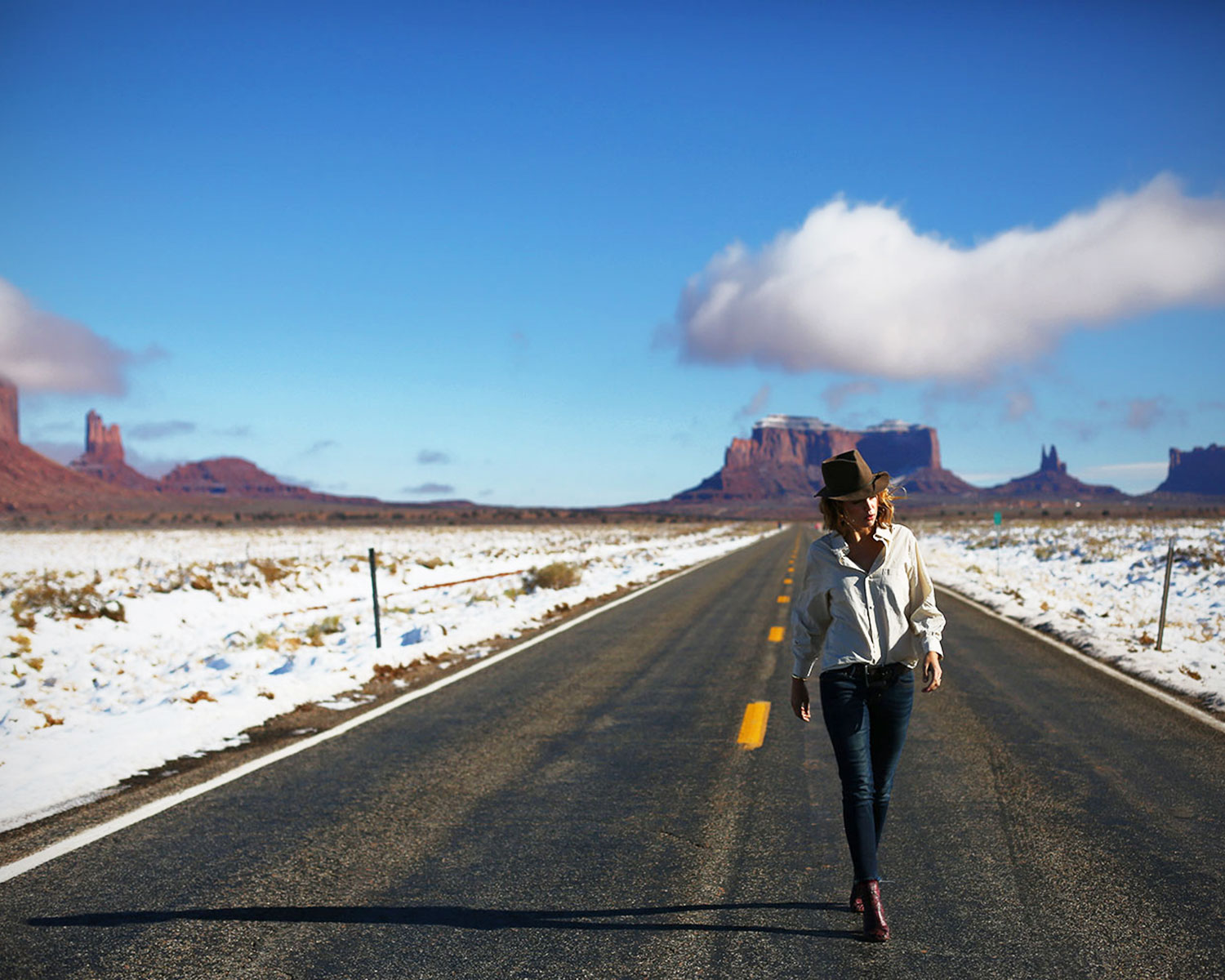
When it comes to creative jobs in general – and jobs in contemporary art in particular – the word “work” often assumes nuanced meanings.
After all work is not supposed to be fun. It has to be a daily ordeal, something that drains off your love for life, fades the colours around you and makes food tasteless.
Well, I think that today, more than ever, that is simply not true.
If you are into Brain Pickings, TED Talks, School of Life & similaria just like I am – and you probably are since you stumbled on this blog – you listen to people spurring you to make a business out of your passion every day. Nothing seems to be impossible in the era of internet. The sheer fact of owning a computer opens up a myriad of resources and possibilities.
Yet once again I hear people in contemporary art industry saying “Obviously with this project we are not interested in making any profit. We are doing that for the glory.” What followed is usually a resigned nodding: “That’s the way it is.”
The glory? What the hell, I thought, we are talking of contemporary art! If you are in for the glory, you better choose something a little more mainstream. Contemporary art gave fame and glory to very few people. The majority of these people are just a handful of artists, the rest are Hans Ulrich Obrist and Achille Bonito Oliva. Full stop. You may worship Palma Bucarelli (the late charming director of Rome’s National Gallery from 1942 al 1975) just like I do. But you also have to acknowledge that she’s pretty niche. Niche to the point she doesn’t even have a Wikipedia page in English. The best part is that I don’t think she would care about having a Wikipedia page either. She was not in for the glory; working in a museum was her job and it was a real respectable job, the kind that pays the bills – and in her case all those glamorous dresses as well.
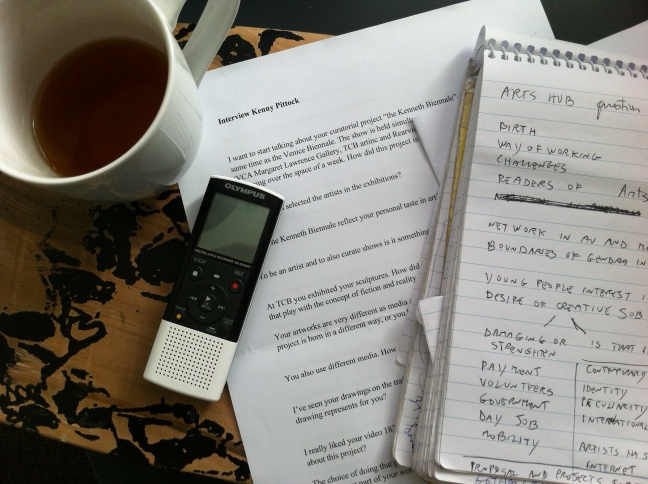
I just came back from my 32nd interview for my reportage in Australia, so I finally feel like I can tell my opinion about how to interview an artist.
The first thing you have to do is obviously contact the artist and you usually do that through her/his mail on her/his personal website.
The first mail has to be a quite formal style, without exaggerating though.
You have to be short and clear, explaining the artist why you want to interview her/ him and what aspects of her/his work are you interested in.
If your interview is part of a bigger project, like a reportage, spend a few words to inform the artist about it.
Don’t forget to explain her/him if this is your own project or if you are working for a magazine.
In this last case it would be nice to put a link to the website of your magazine, so the artist can have a look.
Put also your own website or blog in the signature, along with your personal page on a web magazine that hosts your work, if you have one.
That would give you credibility and would also give the artist the possibility to take a peek at your style and at the kind of articles you usually write.
The next mails would probably me more informal. At this point you can get rid of all the links in your signature, the “best” and “regards” and sign with just your given name.
In your second mail you can suggest the artist a place where you can have the interview.
The most common places are the artist’s studio, a nice and quite café, the space where the artist has currently a show or the gallery that represents him.
Give options to the artist. To meet her/him in his studio would be ideal – you can guess much more from the artist’s natural habitat than from outcomes of a simple conversation.
Of course, you can suggest to meet in the studio, but not all the artists have one and not everyone is happy to let a suspicious journalist or art critic in. If the artist tells you that his studio is empty or messy at moment, just don’t bother. Above all don’t insist.
If you are doing the interview in your own city, you probably would know the most quiet and suitable cafe for an interview. If you are abroad don’t be shy, just ask the artist if he knows a nice cafe to meet.
The choice would probably tell you something about the artist lifestyle and tastes.
In any case discover new places in a new city is always exciting.

Extreme case: let’s say you are an art journalist doing a reportage in a remote third world country.
You do all the research, you use all the common sense and you even follow some “how to” on the internet.
Even then, you could find yourself in a difficult situation like: I fixed one month in advance an interview with artist Pinco tomorrow. But I just meet artist Pallino and I can interview him only tomorrow, because he leaves the day after tomorrow. A rapid check to your mailbox and… crap! The artist Pollaiolo wants to anticipate his interview…apparently he is free only tomorrow!
So, let’s make the point. We have three interviews to prepare in one single day.
And you wake up late today too!
Don’t cancel an interview. Don’t even think about it.
To cancel an interview is bad. It’s always bad.
I did that just two times and each time a dire calamity had struck me.
The first time my boyfriend threw me out of our house, the second time a crater suddenly opened in the ground devouring my beloved kitten.
So don’t do that. Seriously.
What you can do is forget about the tan today, ignore the heat and the shining sun and sit in front of your computer.
Now all your efforts will be concentrated on doing an accurate research and at the same time get all the work done as fast as possible.
I usually use the following method.
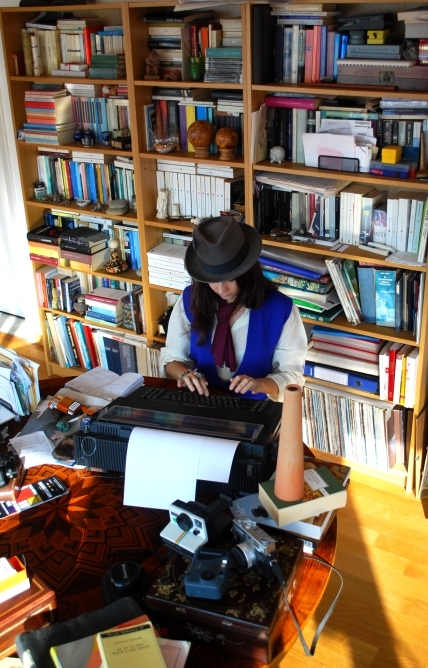
I just come back from Perth, Western Australia. I was there for a reportage about the local contemporary art scene.
Before leaving I wrote this list to clarify my own ideas and to see what I learnt from my mistakes.
Maybe someone else could find it useful too.
“To be an art reporter is fun, but if you don’t plan everything in the details it can be very stressing.
If you are lucky someone, maybe the magazine you collaborate with, has sent you in foreign city or country to do an amazing five pages reportage about the local art scene. If you are extra lucky maybe your magazine would be also open to pay you for that.
But you know, even Oriana Fallaci and Martha Gellhorn would have an hard time to find good assignment nowadays.
Times are tougher and tougher, especially in the field of contemporary art.
If you’re an enterprising free lance journalist or art critic you can probably decide to make a project of your own and try to sell it later to magazines and newspaper. Maybe you can even make a book out of it.
Anyways remember to plan every step in advance.
1. Focus your research
The first thing you have to do is to focus your research. Maybe you are interested just in the painting scene of that city, or just in the hipster scene, or the influence of craft on contemporary art.
Or maybe you want to have a general picture, not very specific but quite thorough.
This second kind of macro reportage is the one I personally like the most. However my tips are valid also if you are conducting a more specific research.
2. Make a previous research on the city
Have a quick look of what other people already wrote about the art scene. Don’t exaggerate, it’s better to not build preconceptions based on what other people thinks. The best thing to do is read a novel or two set in the city you are going to visit. Have a look at a very general travel guide that gives you neutral information, like Lonely Planet or something like it.
If you find some catalogues of exhibition about artists from the city that you are going to visit, try to have a look at it.
If you know someone in your own city that has a link with the place you are going to visit, talk with them, either informally or with an interview.
If these people have a link to the art world is better, but don’t undervalue the impressions of friends or acquaintances disconnected from the scene.
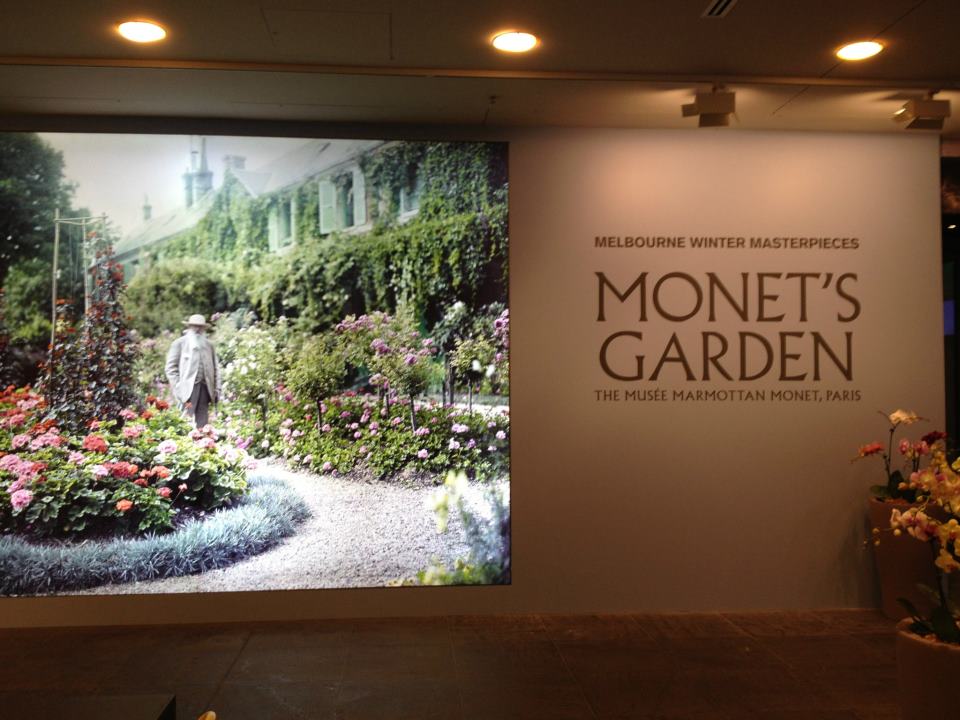
Media Previews, along with the free catalogues of the exhibitions, are among the advantages to be part of the “media”.
I have no idea how the NGV has come to know that I’m a journalist, but you know, I got this mail and the object was “Monet’s Garden Media Preview”. I couldn’t say no.
The ingredients were all there.
The National Gallery of Victoria. One of the most famous modern painters of all the times. Pastels colors Frenchness. I was sure the dynamic NGV would adjust itself to the élégance et finesse required from such event.
So I wore my little back dress with fuchsia stockings and I invited my boyfriend to come with me.
He was not sure he wanted to came. It was too early for him, I mean, nine o’ clock!
“The whole thing would be to classy for me anyways!”, he mumbled curling up in the sheets.
“Come on! Since we are in the City, we can also go do groceries at your favorite Mall after!” I told him.
This convinced him and he finally woke up. He wore his never washed second world war German coat, he grabbed his grannish blue and grey groceries trolley and we were ready to go.




Published! Contemporary art and climate change on Global Comment
The web magazine Global Comment has just published my article “Is contemporary art effective in spreading awareness of climate change?”. It is my first collaboration with this magazine.
Here the link to the article
Read More